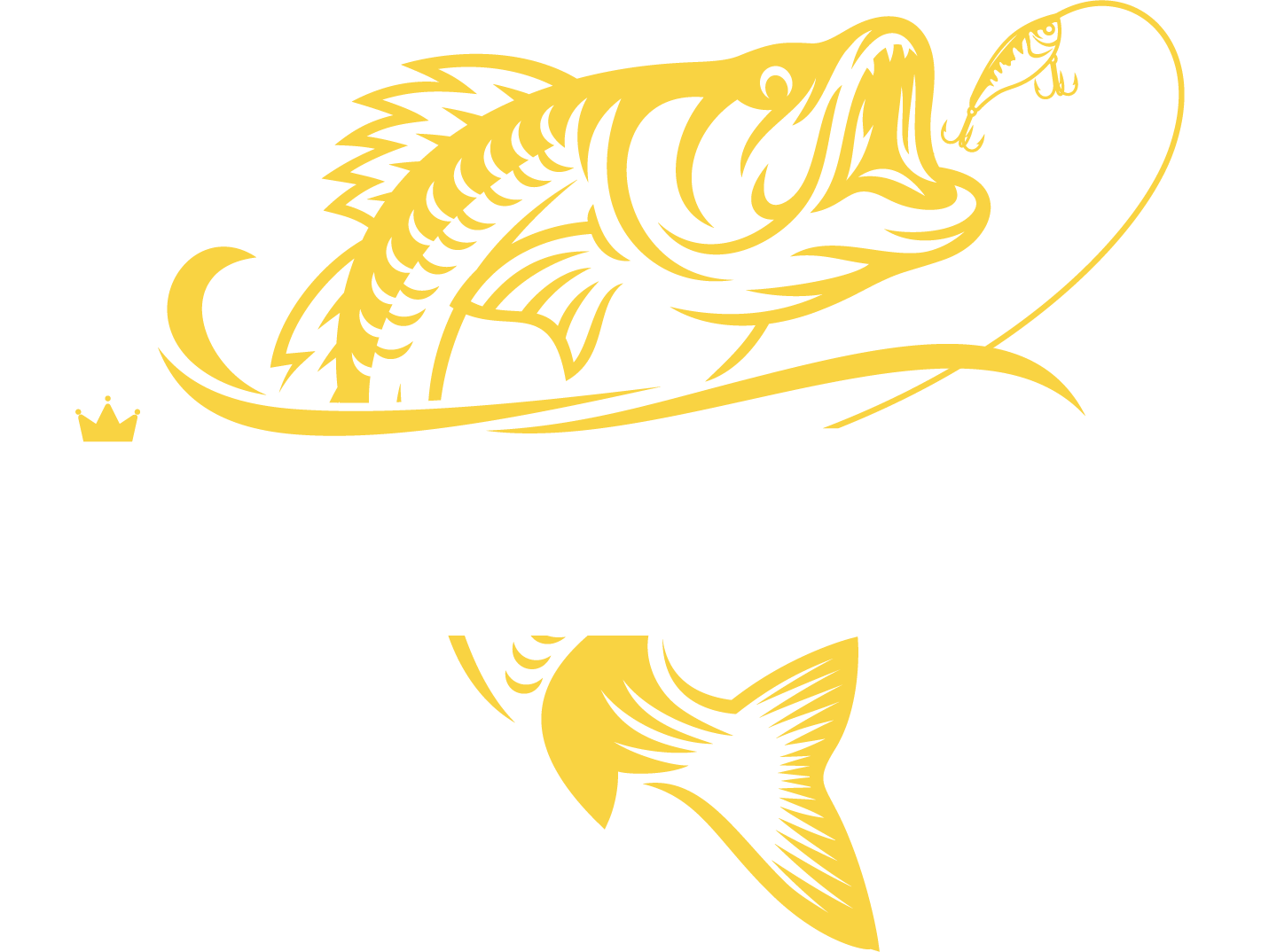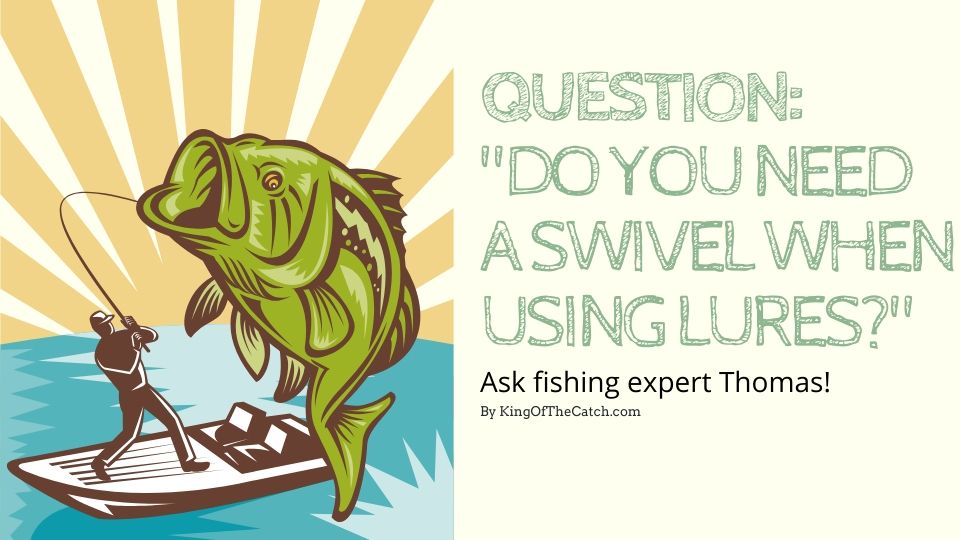You have cast your line into the strong currents, and you want your line to stay put, but it keeps on twisting. You somehow manage to catch a fish. However, while retrieving it, the line continues to twist, and your prized catch manages to escape from your hook. Don’t you hate it when this happens?
Being a fishing enthusiast myself, I have gone through such experiences many times while fishing in currents. I have got some tips and advice on how to solve this problem, and I am going to share it with you today.
Do you need a swivel when using lures?
Question: Hello Thomas, I am Jenna from Wellington, New Zealand. I am 29 years old and I LOVE fishing. Just the other day, I went fishing offshore and faced a problem that I never faced before. My line kept twisting, and there was nothing I could do about it. I heard about a piece of equipment called swivel that will solve my problems.
But I always thought this gear was an unnecessary addition to my fishing toolbox. So I wanted to ask, do you need a swivel when using lures?
Answer: Hello, Jenna. Thanks for the message and interesting question. When it comes to the use of swivels, different anglers have different opinions about it. Some will say you need it, while others might say you can fish well even without one.
We have beat around the bush for long enough. The answer is that you will need a swivel depending on the fishing situation in which you are.
In your case, you have been fishing in strong currents, and this triggered the twisting. You are definitely going to need to use a swivel in such situations. We will go through the times when you should use a swivel and the types of swivels that you can find.
Prior to diving into the main issue, let me first tell you what a swivel is and how it will help you. A swivel is a device that many anglers have in their toolbox. It consists of one eye, hole, or ring on each end of a pivoting center. They have a design that will allow anything attached to either ring to move freely without tangling or twisting.
You put in your fishing line on one ring of a swivel, and your lure, sinker, or hook on the other ring.
Situations that call for using a swivel
You might not always need to use a swivel, but sometimes it becomes an absolute necessity. Here are some situations in which you will have to attach a swivel to your fishing line:
When using a spoon or spinner lure
We know there are different types of lures, and some spin more than the others. Two such lures that may twist and turn upon casting or retrieval is a spoon lure or a spinner lure. It is not possible to avoid these lures because they offer their own sets of benefits.
The Thkfish spoon lures, for example, are attractive, easy to use, and durable, which makes them the ideal lures for trouts and bass. At the same time, many people swear by Tbuymax spinnerbaits as their go-to lure for salmons and trouts.
What you can do instead of avoiding these lures is to attach them to a swivel. This way, you can effortlessly keep your fishing line from twisting, even if your lure has a tendency to spin and mess things up. Twisting of the lure may also weaken your line, so use a swivel if you are planning to use a spinning or spoon lure.
The type of fish you are after
It is normal for a fish to try to escape while reeling it in. However, there are some fish that spin and turn more than others while retrieving. One such fish is the catfish.
Many other fish species become restless and aggressive and twist the line in an attempt to free itself, and they are successful because twisting weakens the line and leads to breakage. You should tie your line and lure to a swivel in such cases.
When using spinning tackle
You will need a spinning rod if you want to throw a spinning tackle. It would help if you used your wrist and arm to get that line exactly where you want it to go. Once you master the spinning tackle, you will not want to change your style again.
One downside of the spinning tackle is that your line might twist in the process. It is difficult to control a twisted line once you cast it, so you should use a swivel to avoid this situation. It will give you more control and manageability.
When the currents are strong
There is very little we can do about the strength or force of the current. The most we can do is try to keep a steady hand over the situation. Lines tend to twist with the current if you fix it to the lure without a swivel. Using a swivel in the currents will help you keep your line stable and fixed even if the lure is moving.
Types of swivels
Here are the four main types of swivels that you can choose from:
Barrel swivel
Barrel swivels are bulky, durable, and does an excellent job of keeping the fishing line twist-free. They are the oldest types of swivel in the market, and many people still prefer it over the other two types of “upgraded” swivel designs.
The barrel swivels consist of a twisted wire making one eye and going through the center to form another eye on the other end. The strength of barrel swivels many differ from one manufacturer to another. If you want to buy a no-nonsense barrel swivel, DE barrel swivel is the way to go. You can get 100 pieces for an affordable price.
Crane swivel
The crane swivel has a very similar design with the barrel swivel. The only difference is that the wire that goes through the center ends inside the swivel and not on the other end of it. It is more expensive than the barrel swivel but has more strength and performs much better under pressure.
They also have a polished surface to reduce friction as much as possible. In most cases, the center part of a crane swivel is usually brass. They are more effective in keeping a line twist-free than the barrel swivel, which explains its slightly higher price.
The stainless steel crane swivels by American Fishing Wire are compact and much more robust than the regular brass crane swivels that we get. On top of that, it will not corrode after exposure to water, wind, and the sun.
Rolling swivel
Roller swivels are similar to crane swivels, but are much smaller and have better rotation abilities. Many people prefer rolling swivels because they are the more affordable version of ball bearing swivels. If you want to be sneaky and unseen, I suggest you go for Dr. Fish roller swivel made of stainless steel.
You can also call roller swivels “power swivels” because of their powerful strength and durability. They can smoothly move through water without much resistance.
Disadvantages of using a swivel
I want to bring to your notice that using a swivel all the time is not necessary. Besides the times when you must use it, as mentioned earlier, you can keep those swivels away in other cases. Using a weak swivel will go against its real purpose and break apart while retrieving squirmy fish.
Tying a swivel adds more work to your fishing prep routine. And in case you do not know how to tie knots, it might prove to be an obstacle rather than help you. Inshore fishing trips do not require the use of a swivel.
It is best to keep one swivel ready in your fishing toolbox, but you only need to use it for strong current, spinning baits, and active fish.
And there you have it, Jenna. Hope this answer will help you on your next fishing adventure!
Don’t forget to e-mail us those King of the Catch pictures! 🙂
Thomas

Niels Thomas is a wildlife expert and fishing fanatic that works with major fishing brands like Deeper Sonar, Abu Garcia, Berkley, PENN, BassPro and Pure Fishing. Through sharing the best fishing tips, tricks, gear reviews, locations and much more he hopes to inspire fishing fanatics to start their own journey towards becoming the King of the Catch!

